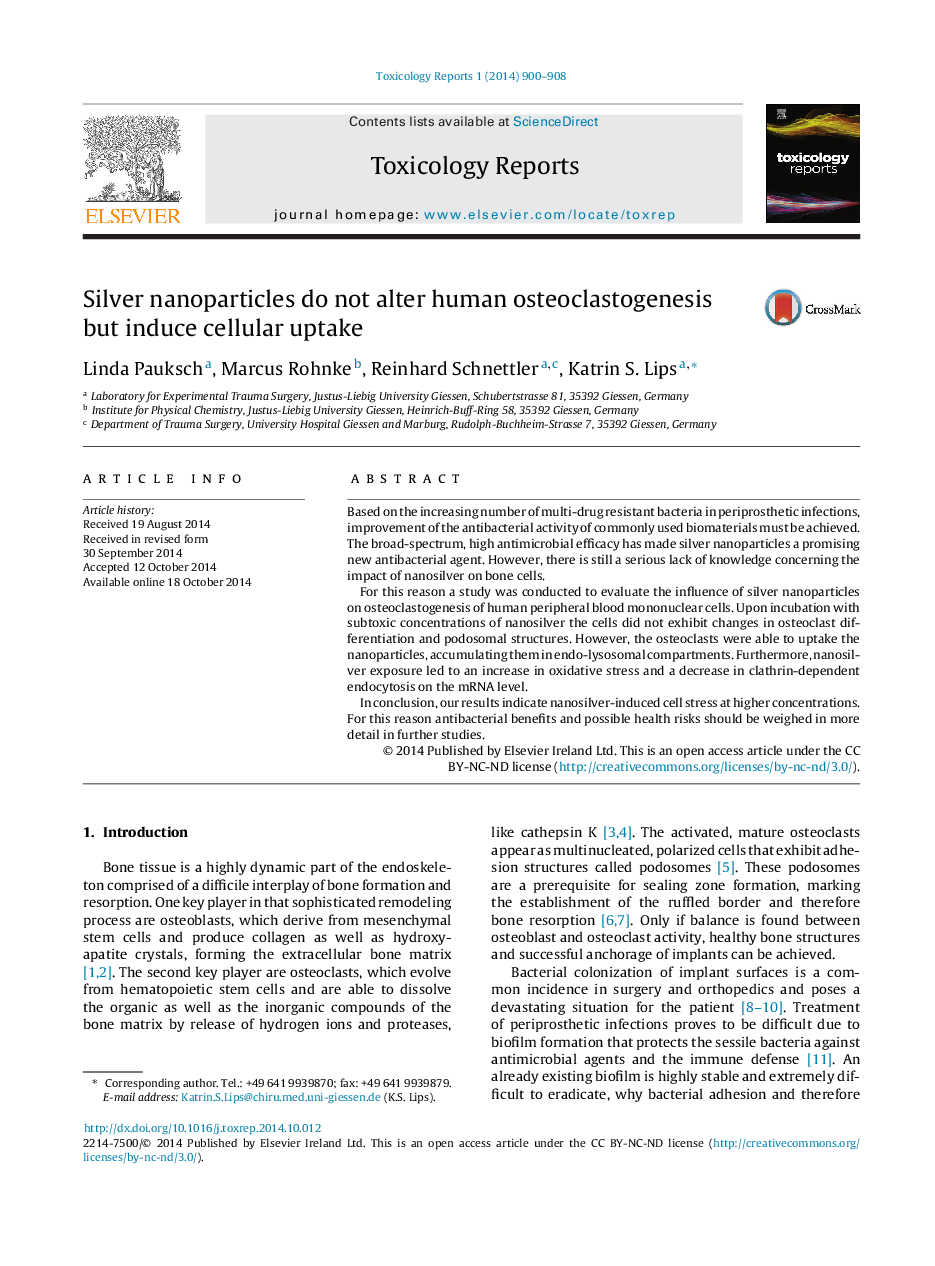| Article ID | Journal | Published Year | Pages | File Type |
|---|---|---|---|---|
| 2572379 | Toxicology Reports | 2014 | 9 Pages |
Based on the increasing number of multi-drug resistant bacteria in periprosthetic infections, improvement of the antibacterial activity of commonly used biomaterials must be achieved. The broad-spectrum, high antimicrobial efficacy has made silver nanoparticles a promising new antibacterial agent. However, there is still a serious lack of knowledge concerning the impact of nanosilver on bone cells.For this reason a study was conducted to evaluate the influence of silver nanoparticles on osteoclastogenesis of human peripheral blood mononuclear cells. Upon incubation with subtoxic concentrations of nanosilver the cells did not exhibit changes in osteoclast differentiation and podosomal structures. However, the osteoclasts were able to uptake the nanoparticles, accumulating them in endo-lysosomal compartments. Furthermore, nanosilver exposure led to an increase in oxidative stress and a decrease in clathrin-dependent endocytosis on the mRNA level.In conclusion, our results indicate nanosilver-induced cell stress at higher concentrations. For this reason antibacterial benefits and possible health risks should be weighed in more detail in further studies.
